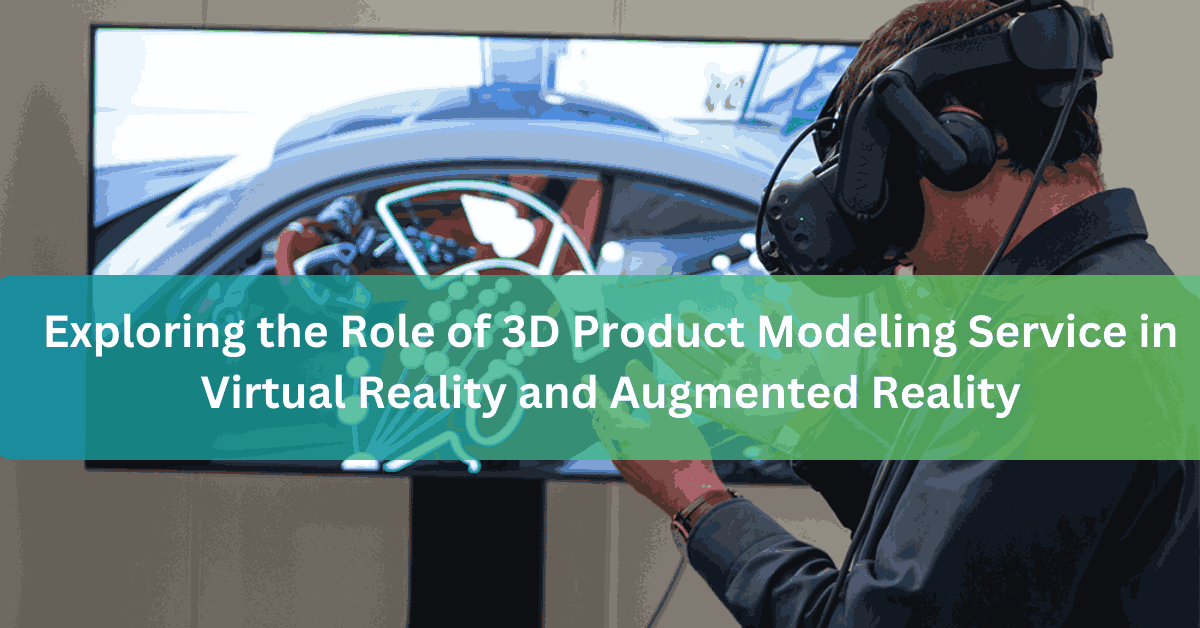Exploring the Role of 3D Product Modeling Service in Virtual Reality and Augmented Reality
One of the wonders birthed in a 3D product modeling studio is integrating a 3D product modeling service with virtual reality (VR) and augmented reality (AR) to create immersive experiences.
Do you want to know more? Keep reading this article revealing how a 3D product modeling company uses 3D product modeling to shape VR and AR.
Table of Contents
The Basics of a 3D Product Modeling Service
3D product modeling services help to create three-dimensional digital representations of physical objects or scenes. The accuracy and detail of these models directly impact the user experience in virtual environments, making them a cornerstone of VR and AR applications.
The link between 3D modeling and user experience is profound. In VR and AR, users interact with digital spaces that mimic reality, and 3D product modeling bridges the physical and virtual environments.
The meticulous recreation of products by a 3D product modeling company in three dimensions enhances realism, enabling users to engage with digital content more intuitively and immersively.
Applications of 3D Product Modeling in VR and AR
Applying 3D product modeling in VR and AR spans diverse industries, changing how businesses operate and connect with their audiences.
In e-commerce, incorporating 3D product modeling services has redefined the online shopping experience. Consumers can now explore products in a virtual space, inspecting them from every angle before purchase.
This enhances decision-making and reduces the likelihood of returns, contributing to a more efficient and customer-friendly e-commerce ecosystem.
The educational sector has also embraced 3D product modeling for training and simulations. Industries such as healthcare, aviation, and manufacturing use VR and AR simulations to train professionals in realistic environments.
The accuracy of 3D models ensures training scenarios closely mimic real-world situations, offering a safe and effective way to enhance skills and knowledge.
In marketing and promotional activities, a 3D product modeling company helps to facilitate innovative and engaging campaigns.
As a result, brands can create interactive AR experiences, allowing consumers to visualize products in their own physical spaces through their devices. This captures attention and fosters a deeper connection between consumers and brands.
Advantages of Using a 3D Product Modeling Service
Adopting 3D product modeling services brings several advantages that significantly impact the success of VR and AR applications.
Realism and immersion are at the forefront of these benefits. The ability to replicate products with high fidelity in virtual environments creates a sense of presence for users.
Whether exploring a virtual showroom or interacting with AR content overlaid on the physical world, the realism achieved through 3D modeling enhances the overall user experience.
Increased engagement and interactivity are notable advantages of working with a 3D product modeling company. 3D models enable users to interact with products in ways that static images or traditional descriptions cannot match.
In VR, users can manipulate and examine virtual objects as they would in the physical world, fostering a deeper understanding and connection.
From a business perspective, the cost-effectiveness and time efficiency of 3D product modeling services are vital. Traditional methods of creating physical prototypes or elaborate photoshoots can be time-consuming and expensive. 3D modeling allows for rapid prototyping and the creation of versatile digital assets that can be repurposed across various platforms.
The Challenges to Overcome
While the benefits of 3D product modeling in VR and AR are evident, there are challenges that developers and businesses must overcome.
Technical challenges in 3D modeling for VR and AR include achieving the right balance between high-quality visuals and performance optimization. VR and AR applications require seamless and responsive experiences, and overly complex 3D models can strain hardware capabilities. Striking the right balance is crucial to ensuring a smooth user experience.
Compatibility issues and platform considerations also pose challenges. VR and AR ecosystems are diverse, with different devices and platforms in play. Ensuring that 3D models are compatible with several devices and operating systems is essential for reaching a broader audience.
Balancing quality and performance is an ongoing consideration. As hardware capabilities change, developers must adapt 3D models to leverage new technologies without sacrificing performance. This iterative process requires staying abreast of technological advancements and updating content accordingly.
Wrap Up
The role of a 3D product modeling service in VR and AR is undeniably transformative. Likewise, the impact of realistic 3D models is far-reaching, from reshaping e-commerce experiences to revolutionizing training simulations. The advantages of increased realism, engagement, and efficiency underscore the importance of working with a 3D product modeling company to incorporate VR and AR to create more realistic and dynamic virtual environments.

